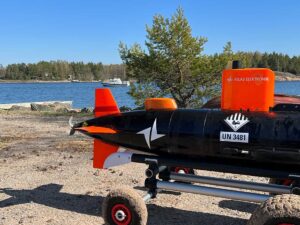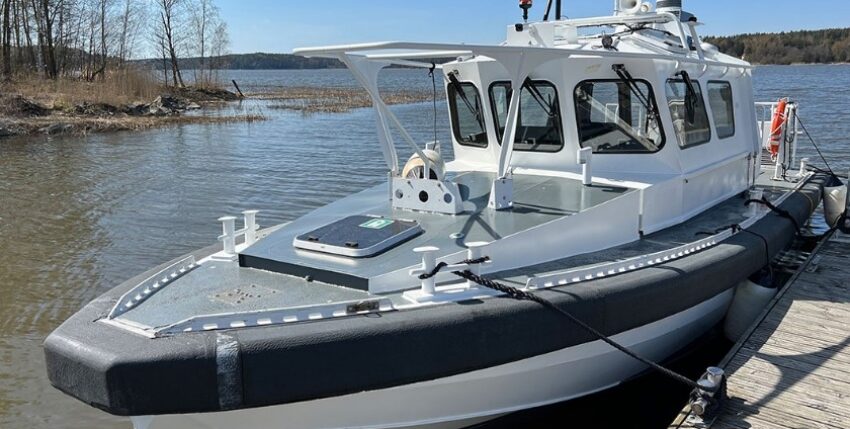German-Finnish co-operation lays the foundation for autonomous maritime operations of the future.
Atlas Elektronik and Marine Alutech used the opening of a new Marine Alutech shipyard in Lappvik, Finland, to present an autonomous workboat. In a joint research and development project, Atlas' Jagos (Joint Autonomous Guidance and Operating System) autonomous core was integrated into the Aurora surface vessel. The Alutech Watercat 1000 Patrol vehicle now has the necessary capabilities for highly automated operation. Jagos is a further development of the control software of the SeaCat unmanned underwater vehicle (UUV) and enables its highly automated control both under and above water.
The eleven-metre-long Aurora can be operated either with a crew of up to nine people or unmanned. The boat is made entirely of aluminium and can reach a top speed of 40 knots with a maximum payload. Different payloads are planned for the vehicle for various mission types, both manned and unmanned.

The system integration of the platform-independent Jagos software enables the vehicle to be operated by remote control. Alternatively, a fully automated mission can be carried out by the vehicle following preliminary mission planning. The Amphitrite user interface enables the control and mission planning of the unmanned system. This interface can also be used to analyse live navigation data as well as data from the vehicle itself and its payload, including fault detection. Jagos forms the software basis for all in-house unmanned systems from Thyssenkrupp Marine Systems and Atlas Elektronik. This standardisation enables the interoperability of a wide variety of vehicle types. With the demonstration of the fully automated research boat, Atlas Elektronik has successfully integrated the Jagos software on a third-party system for the first time.
The unmanned underwater vehicle SeaCat was demonstrated to visitors at the same time as the Aurora. The SeaCat's mission planning was also carried out using the Amphitrite user interface. The UUV then carried out an independent, unsupervised mission under water. A high-resolution sidescan sonar and a multibeam echosounder were used as payloads for this training mission. During the mission, the SeaCat detected two previously unknown wrecks on the seabed. Guests were able to watch the discovery live on monitors in the specially set up mission centre.
Dr Julien Hansen is head of the A-Lab laboratory, an internal research facility at Atlas Elektronik.
Julien Hansen










